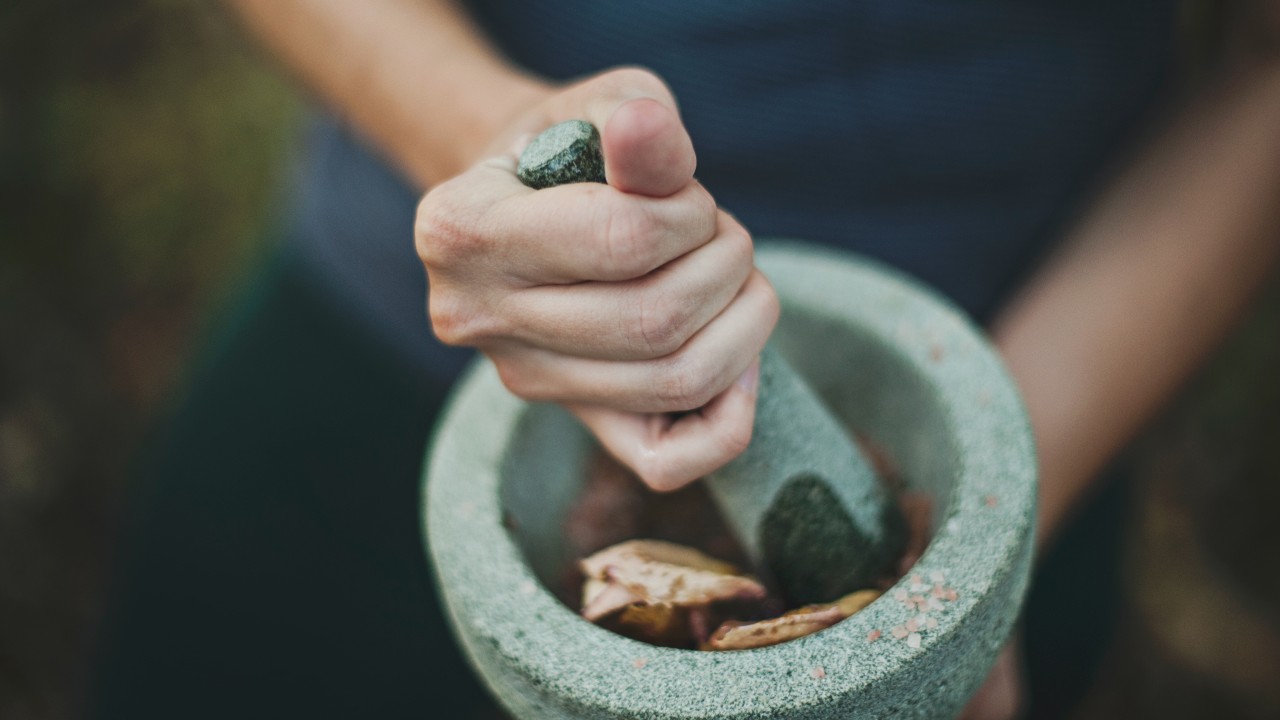Traditional Chinese Medicine (TCM) is an ancient healing system that has evolved over thousands of years. It offers profound insights into the interconnectedness of the human body, mind, and spirit. By incorporating TCM principles into your yoga practice, you can deepen your understanding of energy flow, enhance your overall well-being, and cultivate harmony within yourself.
In this introductory guide, you will learn about the origins of TCM, the practices it informs and its key principles. You’ll also learn about the elements and organs, and how balancing these elements is crucial for maintaining health and harmony.
What is Traditional Chinese Medicine (TCM): Key Principles & Origins
TCM traces its roots back to ancient China, where it developed alongside various philosophical and spiritual traditions. The foundations of TCM can be found in texts such as the Huangdi Neijing 黄帝内经 (Yellow Emperor’s Inner Canon), compiled around 200 BCE. This seminal work introduced key concepts such as Yin-Yang 阴阳, the Five Elements 五行, and the Meridian System, which form the basis of TCM theory and practice.
Meridian Theory, Organ systems & The Five Elements in Traditional Chinese Medicine
TCM views the body as an intricate network of meridians, or energy pathways that traverse the body, through which Qi, vital life energy flows. These are similar to the Nadis in yogic philosophy. There are twelve primary meridians, each associated with a specific organ system and linked to one of the Five Elements. These meridians connect various organs, tissues, energy centres and systems, influencing physical and emotional well-being. By stimulating specific points along the meridians, practitioners can influence the flow of Qi and restore balance within the corresponding organ system.
Within TCM philosophy, we see the body as an interconnected system. Our organs are not merely anatomical structures but also represent a network of functions. Each organ system has specific responsibilities and is associated with certain emotions, senses, tissues, and functions. For example, the Liver governs the smooth flow of Qi, controls emotions like anger, and supports the health of tendons and eyes. The Heart governs blood circulation, houses the mind and consciousness, and influences joy and emotional well-being.
Like the Five Elements in yogic philosophy, TCM is rooted in the Five Elements (Wood, Fire, Earth, Metal, and Water). These represent different qualities and energies within the body and the natural world. Each element corresponds to specific organs, emotions, seasons, and tastes. Balancing these elements is crucial for maintaining health and harmony.
Five Pillars of Traditional Chinese Medicine
There are five main pillars of Traditional Chinese Medicine (TCM), methods to improve emotional, physical and mental health. These are:
1. Acupuncture
Acupuncture involves the insertion of fine needles into specific points along the body’s meridians to stimulate the flow of Qi and restore balance. This practice can help alleviate pain, reduce stress, and improve sleep quality. It can enhance also immune function, and promote overall well-being by addressing specific imbalances within the body.
2. Herbal Medicine
TCM utilises a vast array of herbs, roots, and natural substances to address imbalances and support the body’s healing abilities. These herbal formulas are tailored to individual needs, targeting specific symptoms or underlying causes. The benefits of herbal medicine include supporting organ function, boosting energy levels, improving digestion, regulating hormones, and enhancing overall vitality.
3. Qi Gong: Energy Cultivation
Qi Gong combines gentle movements, breath control, and meditation to cultivate and balance Qi, promoting health and vitality. Regular practice of Qi Gong has innumerable benefits. It enhances circulation, strengthens the immune system, and calms the mind. It can increase energy levels, improve flexibility, and enhance the mind-body connection. Regular practice can also help relieve stress and promote emotional well-being.
Try my online Qigong program for Clarity, Calm and Connection
Cultivate a sense of equilibrium, comfort and clarity in your body, mind and spirit with these simple yet potent practices.
4. Tui Na: Chinese therapeutic Massage
Tui Na is a therapeutic form of Chinese massage that applies various techniques to stimulate acupressure points and meridians. This promotes the flow of Qi and relieves muscular tension. It also helps to improve blood circulation, release energy blockages, reduce pain and inflammation, enhance joint mobility, and promote relaxation and stress relief.
5. Yang Sheng (Life Cultivation) through Dietary Therapy
TCM recognizes the importance of food in maintaining health. Dietary therapy involves the use of specific foods and cooking methods to support balance and nourish the body. By understanding the energetics of food, one can make dietary choices that aid digestion, support organ function, address specific health concerns, and maintain overall wellbeing.
Overview of the Five Elements and Organs
The Five Elements: Wood, Fire, Earth, Metal, and Water represent different qualities and energies within the body and the natural world. As mentioned above, each element corresponds to specific organs, emotions, seasons, and tastes. Instead of isolated entities, the Five Elements are interconnected forces that influence and support each other. For example, Wood feeds Fire, Fire creates Earth, Earth produces Metal, Metal feeds Water, and Water nourishes Wood, creating a cyclical relationship.
Wood Element:
Corresponding to the Liver and Gallbladder, the Wood element embodies growth, flexibility, and planning. It relates to the emotion of anger and the colour green.
Fire Element:
Representing the Heart, Small Intestine, Pericardium, and Triple Heater, the Fire element governs joy, passion, and connection. Fire is associated with the colour red and the emotion of joy.
Earth Element:
Associated with the Spleen and Stomach, the Earth element symbolises nourishment, stability, and grounding. It corresponds to the colour yellow and the emotion of sympathy or overthinking.
Metal Element:
Governing the Lungs and Large Intestine, the Metal element embodies inspiration, clarity, and letting go. It relates to the colour white and the emotion of grief or sadness.
Water Element:
Corresponding to the Kidneys and Bladder, the Water element represents deep wisdom, adaptability, and willpower. It is associated with the colour blue and the emotion of fear.
Try our Yin Yoga and the Five Elements program
A 5 week program of Yin yoga practices based on the Five Elements and Meridian theory from Traditional Chinese Medicine, designed to support and nourish your whole body and mind.
Read Part 2: How Traditional Chinese Medicine can help to balance your emotions
In the second of this 2-part series, you’ll learn how the interplay between the Five Elements, Meridian Channels, and Organ Systems provides valuable insights if you are seeking to cultivate balance and wellbeing.



